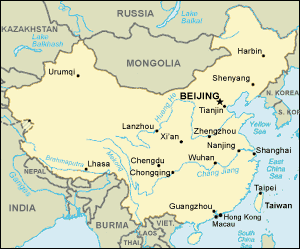Twenty-five years of economic reform in China have impacted virtually all corners of society. One fascinating window on these changes is the evolving role of traditional dispute resolution processes.
 |
During the Mao era (1949-1976), extra-judicial mediation committees (jumin tiaojie weiyuanhui) in urban neighborhoods helped to maintain social control, as well as to resolve disputes and conserve social harmony. Such use of mediation for dispute resolution was not a Communist invention, however. Localized out-of-court mediations have existed in China for centuries, allowing individuals to avoid a legal system that has, for most of its history, been publicly feared as a tool for punishment by the state. Moreover, the Chinese traditionally have preferred such informal dispute resolution over formal law because of mediation's reliance on compromise, restoring the interpersonal relationships damaged by disputes.
After taking power in 1949, the Chinese Communist Party enhanced the power of extra-judicial mediations by formally institutionalizing them in various state units and political organizations. In the neighborhoods, mediation committees became a part of the Residents’ Committees (jumin weiyuanhui). These grassroots extra-legal bodies not only acted as the primary organization for legal work, but also took part in mobilizing the urban masses to build a socialist nation.
However, post-Mao economic reforms have changed the physical and social structures of Chinese cities, bringing new challenges to these extra-legal organizations. Reforms have promoted the development of the legal system, the rule of law, and other formal institutions in China. Economic reforms also have decentralized China’s political control, thus increasing personal freedoms. Moreover, economic development and modernization have led to the creation of new neighborhoods that rest on ideas of individualism, competition, and private space – notions in direct conflict with China's embedded traditions of community relations and social harmony.
As Chinese cities continue to modernize, I wondered whether mediation committees could continue to play the same role as before. Moreover, to what extent are these remnants of the Mao era still significant in contemporary urban Chinese neighborhoods, where some communities are more modern than others, and some attempt to blend modernity, socialism and traditionalism? And how do their roles in maintaining stability and harmony differ in different communities undergoing transformation at uneven paces?
To answer these questions, I will travel to Beijing this summer to study mediation committees in different neighborhoods. Specifically, I will compare the present role of mediation committees in three types of neighborhoods: a traditional alley with courtyard housing (hutong); a "Maoist" neighborhood of combined work-residential units; and a modern neighborhood of high-rise luxury apartment buildings. I will analyze how the residential context (i.e. history, physical layout of the neighborhood) combines with residents' social class and community ties to influence attitudes toward extra-legal mediation committees as a forum for dispute settlement. Furthermore, I will explore the role of mediators in individual neighborhoods and how they shape urban life. Through my studies, I hope to shed light on the relationship among extra-legal bodies, social networks, and the development of China’s legal system.
— Connie
A 2004 Haas Scholar, Connie is working with Prof. Thomas Gold of Sociology on her research; she sincerely appreciates all of his help and guidance.





